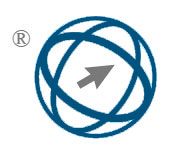Enhanced OpenPose Framework for Athlete Motion Analysis via Multi-Classifier Fusion and D-S Decision Rules
Abstract
This study aims to address the issue that traditional analysis methods do not fully consider the differences in the number, types, and equipment occlusion of athletes in actual sports scenes. It constructs an athlete skeleton keypoint detection and action analysis model based on the OpenPose algorithm. The original OpenPose pipeline was optimized by introducing a multi classifier module combining SVM, KNN, and Naive Bayes, as well as a decision model based on conflict judgment and D-S rule fusion. The experiment used a dataset containing 2000 athlete training images (divided into training, testing, and validation sets in a 7:2:1 ratio), and compared it with the original OpenPose and DeepPose baseline models. The results showed that the optimized model had a loss rate of 4.1% on the training set and an accuracy rate of 98%. The error rate of keypoint detection was 7.4%, the speed was 14.2fps, the detection accuracy was 0.92 mAP, and the time consumption was 0.9s. In the case analysis, the highest discrimination rates of the model for football players' running and defensive actions were 0.94 and 0.89, respectively. Moreover, it could further distinguish between subdivided actions such as sprinting and backward running. In addition, the model performed well in different types of athletes (including athletics, weightlifting, gymnastics, etc.) and complex scenes (occlusion, multiple people), with significantly better accuracy and recall than the baseline model (mAP=0.84 for the original OpenPose and mAP=0.78 for DeepPose). The research reveal that the proposed model has higher accuracy and robustness in athlete bone keypoint detection and action analysis, and can provide effective support for scientific training.
Full Text:
PDFReferences
M. Gao, J. Li, D. Zhou, Dazheng Z., Yumin Z., Minglinag Z., and B. Li. “Fall detection based on OpenPose and MobileNetV2 network,” IET Image Processing, vol. 17, no. 3, pp. 722-732, October 2023, DOI: 10.1049/ipr2.12667.
N. J. Cronin, J. Walker, C. B. Tucker, G. Nicholson, M. Cooke, S. Merlino, and A. Bissas. “Feasibility of OpenPose markerless motion analysis in a real athletics competition,” Frontiers in Sports and Active Living, vol. 5, pp. 1298003-1298004, January 2024, DOI: 10.3389/fspor.2023.1298003.
M. Xu, L. Guo, and H. C. Wu. “Robust abnormal human-posture recognition using OpenPose and Multiview cross-information,” IEEE Sensors Journal, vol. 23, no. 11, pp. 12370-12379, April 2023, DOI: 10.1109/JSEN.2023.3267300.
Z. Shi, Z. Zhao, J. Chen, and Guangxin cheng. “Research on sit-up counting method and system based on human skeleton key point detection,” Quality in Sport, vol. 24, pp. 55408-55408, November 2024, DOI: doi.org/10.12775/QS.2024.24.55408.
K. Han and X. Li. “Research method of discontinuous-gait image recognition based on human skeleton keypoint extraction,” Sensors, vol. 23, no. 16, pp. 7274-7275, August 2023, DOI: https://doi.org/10.3390/s23167274.
Q. Yin, T. Wu, and K. Zhou. “End-To-End Skeletal Point Detection Algorithm for Garment Processing Actions,” International Conference on Artificial Intelligence for Society, vol. 17, no. 1, pp. 513-522, Springer Nature Switzerland, August 2024, DOI: 10.1007/978-3-031-69457-8_47.
T. Fukushima, K. Haggenmueller, and M. Lames. “Validity of OpenPose Key Point Recognition and Performance Analysis in Taekwondo,” International Symposium on Computer Science in Sport, vol. 23, no. 1, pp. 68-76, Springer Nature Singapore, May 2023, DOI: 10.1007/978-981-97-2898-5_8.
T. Y. Jeong and I. K. Ha. “OpenPose based smoking gesture recognition system using artificial neural network,” Tehnički glasnik, vol. 17, no. 2, pp. 251-259, August 2023, DOI: 10.31803/tg-20221220200605.
C. T. Lu, Y. C. Liu, and Y. C. Pan. “An intelligent playback control system adapted by body movements and facial expressions recognized by OpenPose and CNN,” Multimedia Tools and Applications, vol. 83, no. 10, pp. 31139-31160, September 2024, DOI: 10.1007/s11042-023-16880-y.
S. H. Ramesh, E. D. Lemaire, A. Tu, K. Cheung, and N. Baddour. “Automated implementation of the Edinburgh Visual Gait Score (EVGS) using OpenPose and handheld smartphone video,” Sensors, vol. 23, no. 10, pp. 4839-4840, May 2023, DOI: 10.3390/s23104839.
E. Barberi, M. Chillemi, F. Cucinotta, and F. Sfravara. “Fast three-dimensional posture reconstruction of motorcyclists using openpose and a custom MATLAB script,” Sensors, vol. 23, no. 17, pp. 7415-7416, August 2023, DOI: 10.3390/s23177415.
F. Diaz-Rojas and M. Myowa. “Estimation of human body 3D pose for parent-infant interaction settings using azure Kinect and OpenPose,” MethodsX, vol. 13, no. 1, pp. 102861-102862, December 2024, DOI: 10.1016/j.mex.2024.102861.
X. Liao, Y. Han, and S. Cheng. “OpenPose-based model for infant cerebral palsy auxiliary detection,” Third International Conference on Computer Vision and Pattern Analysis (ICCPA 2023), SPIE, vol. 12754, no. 1, pp. 264-270, August 2023, DOI: 10.1117/12.2684596.
S. H. Amirnordin, M. G. H. Khi, Z. Ngali, and S. H. S. Afdzaruddin. “Biomechanics Analysis of Basketball Shooting Via OpenPose Motion Capture System,” Journal of Advanced Research in Applied Mechanics, vol. 112, no. 1, pp. 32-45, December 2024, DOI: 10.37934/aram.112.1.3245.
L. Amadi and G. Agam. “PosturePose: Optimized Posture Analysis for Semi-Supervised Monocular 3D Human Pose Estimation,” Sensors, vol. 23, no. 24, pp. 9749-9750, December 2023, DOI: 10.3390/s23249749.
Rajendran A K, Sethuraman S C. A survey on yogic posture recognition[J]. IEEE Access, 2023, 11(1): 11183-11223. DOI: 10.1109/ACCESS.2023.3240769.January
M. C. Tsai, E. T. H. Chu, and C. R. Lee. “An automated sitting posture recognition system utilizing pressure sensors,” Sensors, vol. 23, no. 13, pp. 5894-5895, June 2023, DOI: 10.3390/s23135894.
Z. Chen, J. Lu, and H. Wang. “A review of posture detection methods for pigs using deep learning,” Applied Sciences, vol. 13, no. 12, pp. 6997-6998, June 2023, DOI: 10.3390/app13126997.
G. Yuan. “Application of posture estimation optimization algorithm in the analysis of college air volleyball teaching movements,” Systems and Soft Computing, vol. 6, no. 1, pp. 200135-200136, December 2024, DOI: 10.1016/j.sasc.2024.200135.
F. G. Altin, İ. Budak, and F. Özcan. “Predicting the amount of medical waste using kernel-based SVM and deep learning methods for a private hospital in Turkey,” Sustainable Chemistry and Pharmacy, vol. 33, no. 1, pp. 101060-101061, June 2023, DOI: 10.1016/j.scp.2023.101060.
H. Wang, G. Li, and Z. Wang. “Fast SVM classifier for large-scale classification problems,” Information Sciences, vol. 642, no. 1, pp. 119136-119137, September 2023, DOI: 10.1016/j.ins.2023.119136.
D. Valero-Carreras, J. Alcaraz, and M. Landete. “Comparing two SVM models through different metrics based on the confusion matrix,” Computers & Operations Research, vol. 152, no. 1, pp. 106131-106132, April 2023, DOI: 10.1016/j.cor.2022.106131.
O. Peretz, M. Koren, and O. Koren. “Naive Bayes classifier–An ensemble procedure for recall and precision enrichment,” Engineering Applications of Artificial Intelligence, vol. 136, no. 1, pp. 108972-108973, October 2024, DOI: 10.1016/j.engappai.2024.108972.
A. Amin, A. Adnan, and S. Anwar. “An adaptive learning approach for customer churn prediction in the telecommunication industry using evolutionary computation and Naïve Bayes,” Applied Soft Computing, vol. 137, no. 1, pp. 110103-110104, April 2023, DOI: 10.1016/j.asoc.2023.110103.
K. F. Sotiropoulou, A. P. Vavatsikos, and P. N. Botsaris. “A hybrid AHP-PROMETHEE II onshore wind farms multicriteria suitability analysis using kNN and SVM regression models in northeastern Greece,” Renewable Energy, vol. 221, no. 1, pp. 119795-119796, February 2024, DOI: 10.1016/j.renene.2023.119795.
R. Ahmed, M. Bibi, and S. Syed. “Improving heart disease prediction accuracy using a hybrid machine learning approach: a comparative study of SVM and KNN algorithms,” International Journal of Computations, Information and Manufacturing (IJCIM), vol. 3, no. 1, pp. 49-54, June 2023, DOI: 10.54489/ijcim.v3i1.223.
H. Chen, R. Feng, S. Wu, et al. “2D Human pose estimation: A survey,” Multimedia systems, vol. 29, no. 5, pp. 3115-3138, November 2023, DOI: 10.1007/s00530-022-01019-0.
K. Osawa, Y. You, Y. Sun, W. Taiqi, Z. Shun, M. Shimodozono, and E. Tanaka. “Telerehabilitation System Based on OpenPose and 3D Reconstruction with Monocular Camera,” Journal of Robotics and Mechatronics, vol. 35, no. 3, pp. 586-600, January 2023, DOI: 10.20965/jrm.2023.p0586.
H. S. Nam, S. H. Park, J. P. Y. Ho, S. Y. Park, J. H. Cho, and Y. S. Lee. “Key-point detection algorithm of deep learning can predict lower limb alignment with simple knee radiographs,” Journal of Clinical Medicine, vol. 12, no. 4, pp. 1455-1456, February 2023, DOI: doi.org/10.3390/jcm12041455.
T. Ino, M. Samukawa, T. Ishida, N. Wada, Y. Koshino, S. Kasahara, and H. Tohyama. “Validity and Reliability of OpenPose-Based Motion Analysis in Measuring Knee Valgus during Drop Vertical Jump Test,” Journal of Sports Science & Medicine, vol. 23, no. 1, pp. 515-516, September 2024, DOI: 10.52082/jssm.2024.515.
P. Lee, T. B. Chen, H. Y. Lin, L. R. Yeh, Chinhsuan L., and Yenlin C. “Integrating OpenPose and SVM for Quantitative Postural Analysis in Young Adults: A Temporal-Spatial Approach,” Bioengineering, vol. 11, no. 6, pp. 548-549, May 2024, DOI: 10.3390/bioengineering11060548.
DOI: https://doi.org/10.31449/inf.v49i34.9054

This work is licensed under a Creative Commons Attribution 3.0 License.









